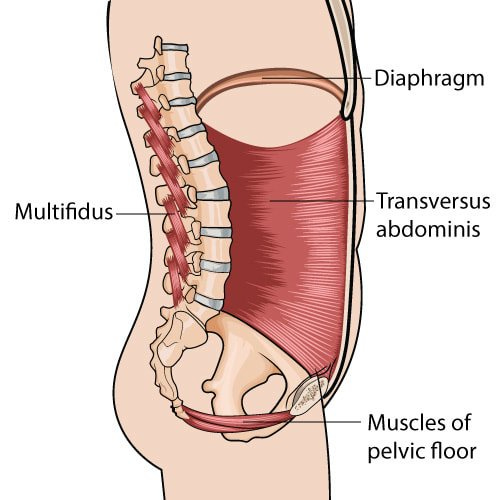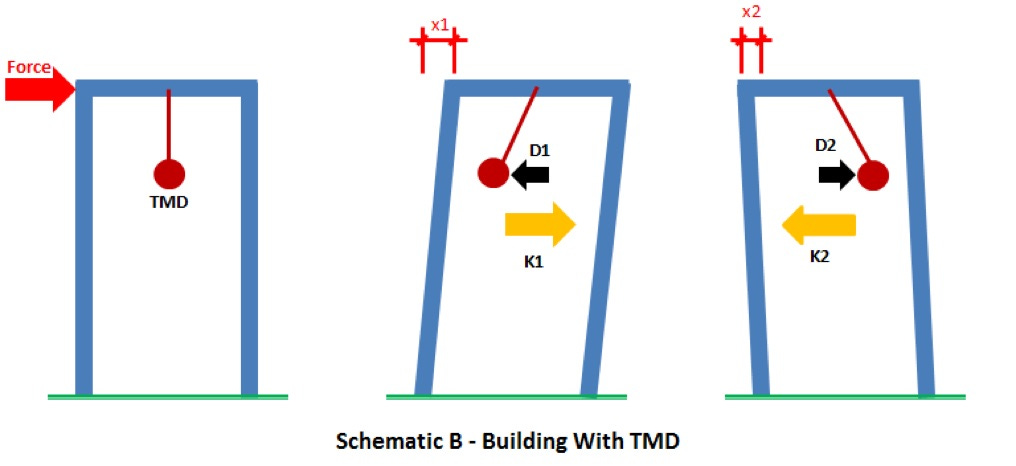Strength & Stability Starts with Your Core (Part. I)
Whether we're focused on reducing pain, or building strength, we should always begin by focusing on our core.
“The mother of all proximal stability is your core… Core stability is essential for ability and performance.” — Stuart McGill, Ph.D.
On a recent trip to New York City, I marveled at human ingenuity and our capacity to build such monuments to the sky. My wife and I bought tickets to go to the One Vanderbilt observation deck, which stands over 1,000 feet above the ground. While attempting to see the Manhattan skyline on a particularly rainy night, I got curious about how we’ve been able to construct these massively tall skyscrapers. It turns out that the technology is not at all dissimilar to the engineering of the human body—specifically relating to our core muscles.

Our Core Purpose
Skyscrapers are built with two essential structures that enable them to withstand lateral forces such as wind or earthquakes. These are Tuned Mass Dampeners (TMDs) and Braces. Together these two structures stabilize a building by absorbing and dissipating force as it hits the building. What does our core do? Stabilizes our spine, absorbs energy, and dissipates it.
In our previous two articles, we focused on muscular imbalances as the source of pain and how proactive movements are a tool to counter those imbalances. At the root of all proactive movement lies our ability to stiffen and “brace” our core. If force hits us from one direction, our core allows us to counter it by stabilizing against the direction of the force, just like a TMD:
How? Our core primarily involves the muscles around our lower thoracic spine (middle back), lumbar spine (lower back and waist), and hips. When we stiffen these muscles, we create intra-abdominal pressure. This pressure creates a cylinder that holds the spine in place, enabling force to transfer between the upper and lower body and absorb force more evenly throughout the body.
What are the core muscles? Expanding on what we discussed in Automated Processes, these muscles are:
Transverse Abdominis — Deep, underlying muscles that form a natural corset around our body, wrapping from the lower portion of our rib cage around our waist to our spine.
Multifidus — Underlying lower back muscle that works in conjunction with the transverse abdominis to compress and stabilize the spine.
Pelvic Floor Muscles — Underlying muscles that act as the “floor” of our core, holding our abdominal organs in place and stabilizing the lumbar spine and pelvis.
Diaphragm — Primary muscle that controls breathing; it contracts during inhalation and relaxes during exhalation. It also separates our chest from our abdominal cavity and acts as the “ceiling” of our core.

Internal and External Obliques — Control bending and rotation movements of our waist. They also provide lateral stability to the spine.
Rectus Abdominis — Outermost layer of the abdominal muscles, commonly known as the “six-pack abs.” These muscles control our ability to flex our lumbar spine and tilt our pelvis up and down.
Erector Spinae — Lower back muscles that work with the rectus abdominis to help extend the spine and stabilize it in an upright posture.
There are also two muscles not typically included as part of our core. However, I will never design a core routine that does not include them because of their importance to the stabilization of our spine and hips (yes, this is a hill I’m willing to die on). These two muscles are our:
Latissimus Dorsi — Originating on the lower thoracic and lumbar spine, the lats are essential for stabilizing our spine when our arms are away from our body and maintaining an upright posture.
Gluteus Maximus — Originating on the pelvis and sacrum, which is the lowest part of our spinal column and connects our spine to our pelvis, the glutes are essential for stabilizing our hips and lumbar spine.
Stability as a Mechanism for Strength and Injury Prevention
In college, I had a roommate, Mike, who was a competitive hockey player. If you know much about playing hockey, you know how strong your core needs to be in order to be successful. Something we enjoyed doing, like the testosterone-inflated teenagers we were, was running down our long hallway at each other, ramming our shoulders into each other. Although I was 30 pounds heavier than Mike, he knocked me on my butt almost every time. Why? He had an exceptionally strong core, and he knew how to use it. When we ran into each other, it felt like I had just run into a tree trunk.
When our core muscles stabilize our spine, it amplifies more than just our stability itself. Having a stable spine also increases each of our physical outputs: power, strength, speed, agility, balance, endurance, and proprioception—our awareness and control of our extremities.
Say you want to train for a marathon. You’re a decent runner, but five miles in, you experience stiffness in the neck and shoulders. The next day your knees and lower back are aching. The shoulder stiffness and the knee pain are very much linked. We often make what are called micromovements—especially when we begin to tire—which use and waste energy. Micromovements that often occur when running are the shoulders and upper back tense and contract. The tension will have a cascading effect on the lower body manifesting in the shortening of our stride. Shortening of strides means you have to take far more strides to cover the same distance. You might also notice a slight rotation of the hips with each stride, as well as becoming more flat-footed. Both of which will put increased pressure on your knees and lower back.
When the core muscles are engaged, the amount of micromovements we make drastically decreases. As our spine stiffens, we can maintain a more upright posture, and energy travels through our body far more efficiently. When we run, our shoulders should remain very relaxed. A strong, engaged core creates the necessary spinal stiffness that allows our chest and lats to control the elbow drive, as opposed to swinging the entire arm, preserving energy and preventing tension and injury.
Breathing to Engage The Core During Exercise
“Exhale during exertion, inhale while loading.” This is something I routinely coach in training sessions and applies to nearly every strength-training exercise. Why?
Our diaphragm is both a part of our core and responsible for respiration. If we solidify our core, our diaphragm can also do a significantly better job managing our oxygen intake and carbon dioxide expulsion. If you’re performing a pushup, inhaling on the way down stiffens your spine so that you can maximize the force generation in the proper muscles—your chest—when you push up. And, just like our running example, it will help you keep your shoulders and arms relaxed.
In part II, we’ll discuss how to apply this to your daily life and the different types of core strengthening you can do!
If you enjoyed this post, please hit the like button and share it with a friend.
Conversation with a Personal Trainer
While speaking with a client earlier today, I asked how his lower back pain had been feeling lately. For over a year, he had been experiencing pain in his upper SI joint, which connects the sacrum to the pelvis. During this time, we’ve been heavily focused on strengthening his core.
He replied that he hadn’t felt the pain for a long time, and he’d completely forgotten about it. This demonstrates the importance of having a strong, engaged core.
Worth Listening To
It is no small thing to say Stuart McGill is one of the people I have learned the most from regarding posture, spinal health, and core strengthening. Much of what many of you hear me discuss in training comes from reading and listening to his work. That each of us has the opportunity to freely listen to his wealth of knowledge in a podcast… what a world we live in.
Curiosity Corner
Podcasts:
Articles:
PBMs: The Powerful Companies Driving Local Drugstores Out of Business - The New York Times
The high-return activity of raising others' aspirations - Tyler Cowen
Federal Trade Commission Announces Final “Click-to-Cancel” Rule Making It Easier for Consumers to End Recurring Subscriptions and Memberships — Federal Trade Commission
The kids aren't entitled, they're suffering — Adam Singer
Do U.S. Ports Need More Automation? — Construction Physics
Beyond the headlines: evaluating exercise as an equivalent to medication for the treatment of depression and anxiety — Peter Attia
EVs are Just Going to Win — Noah Smith
US Government Says Relying on Chinese Lithium Batteries Is Too Risky — WIRED



